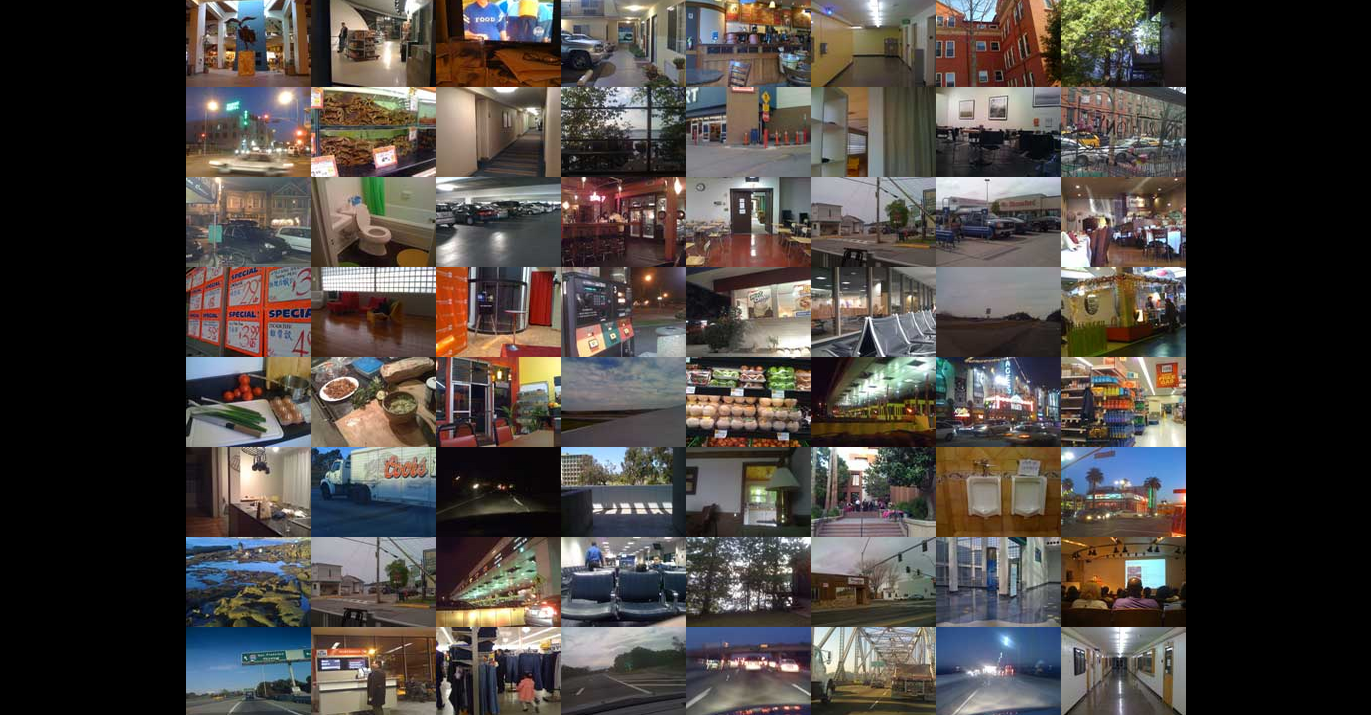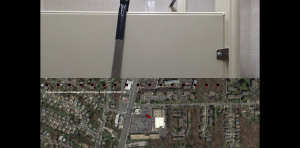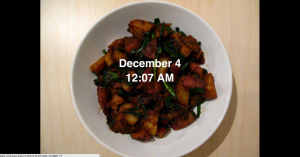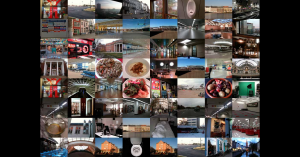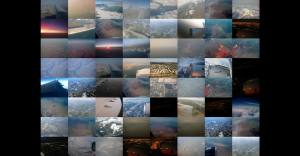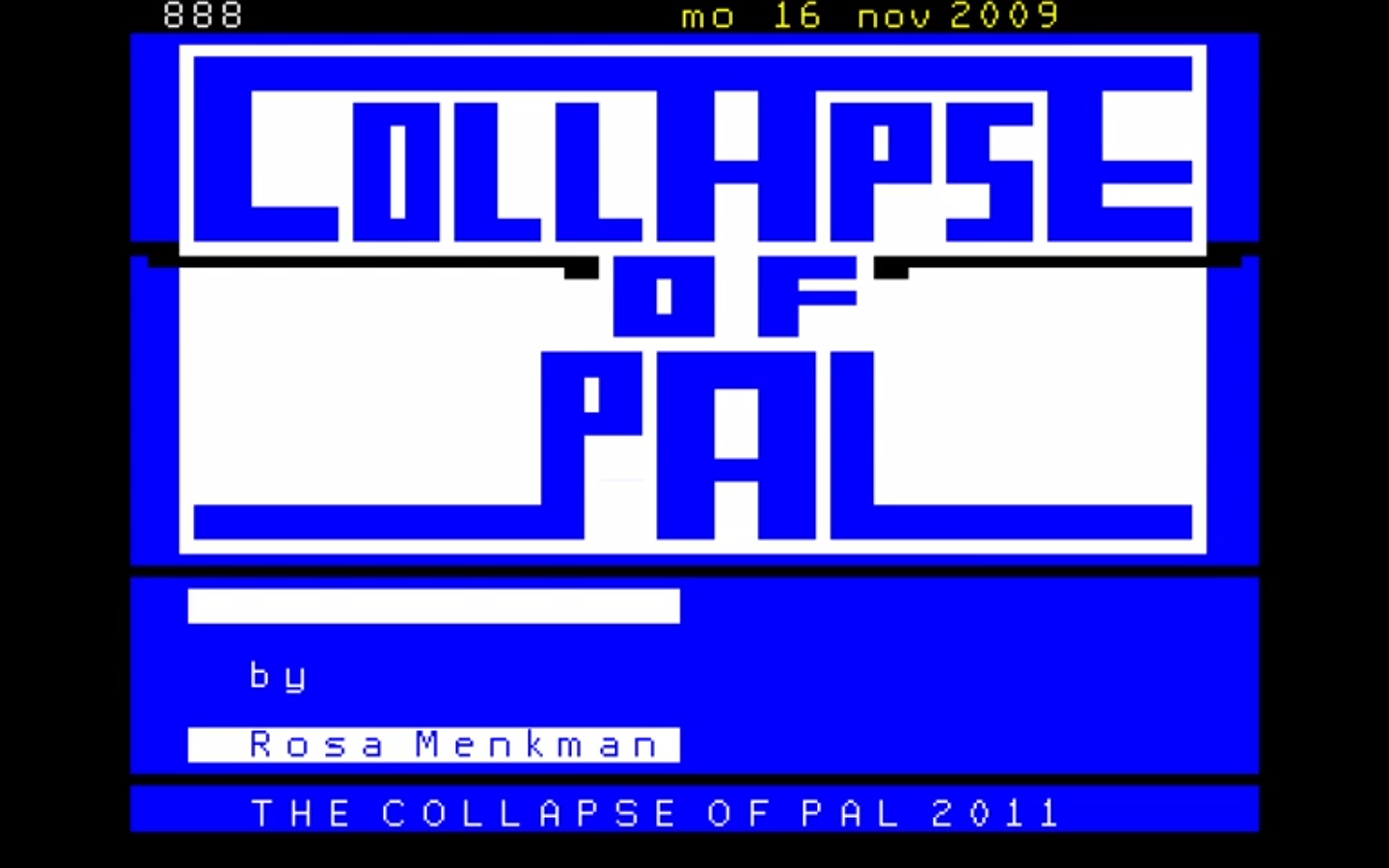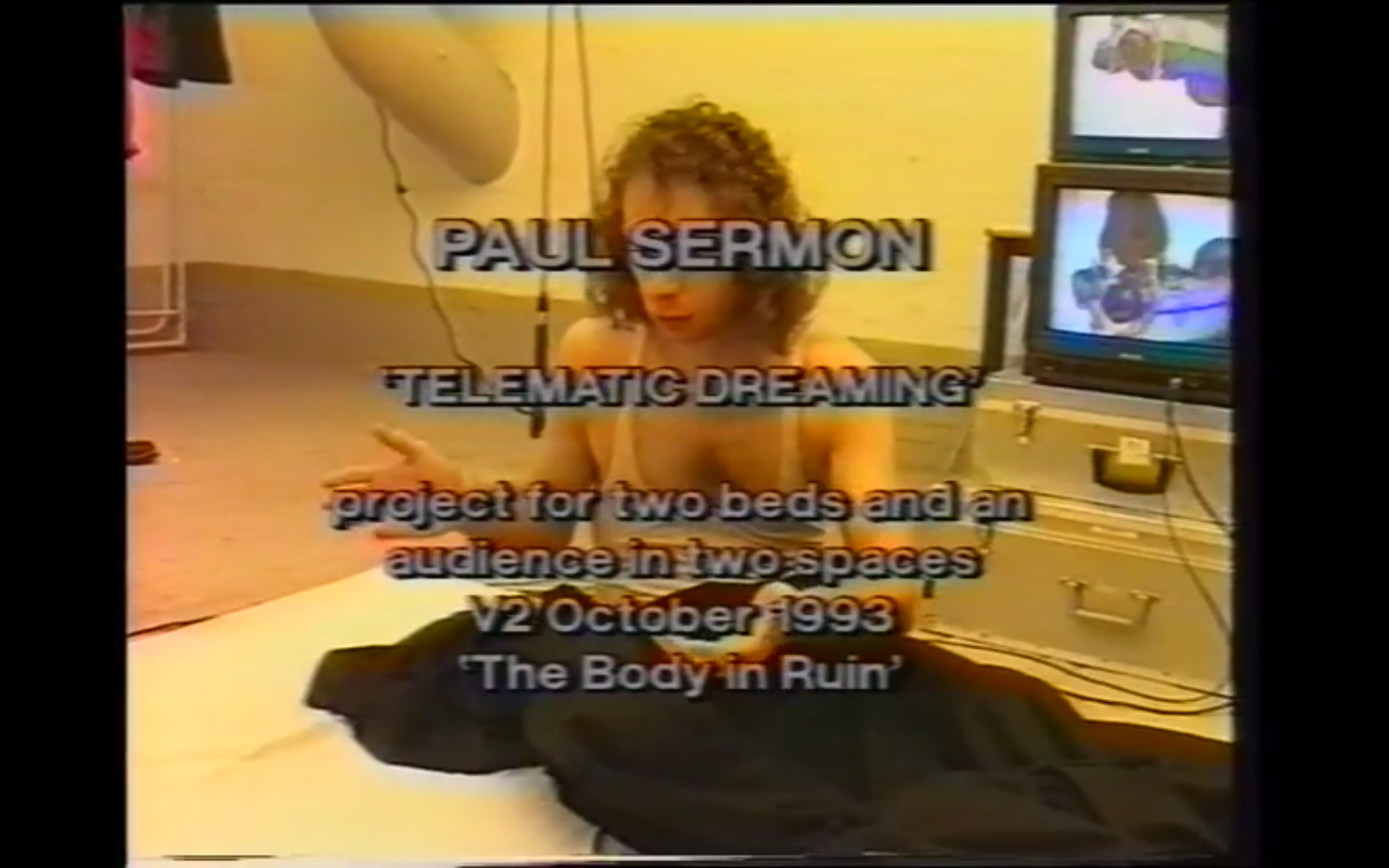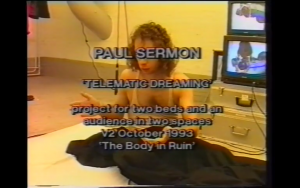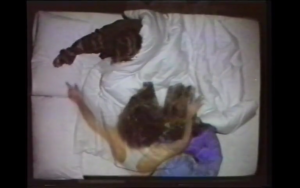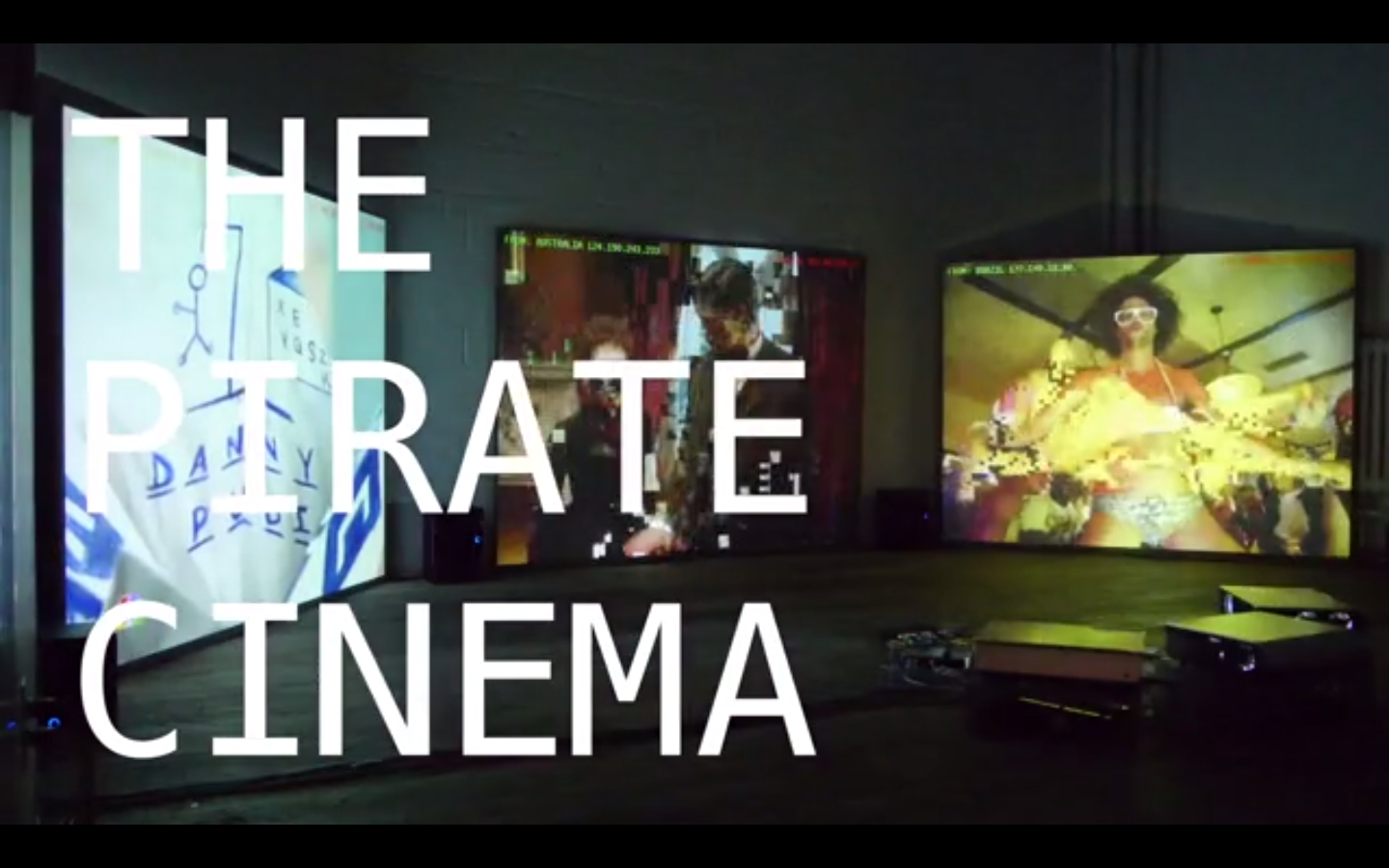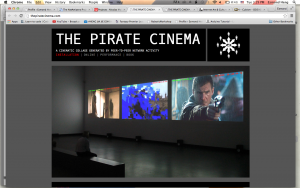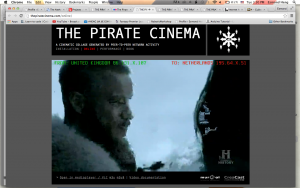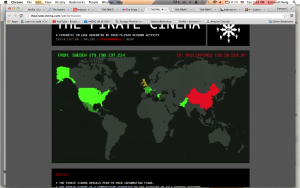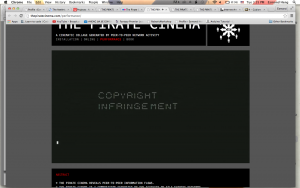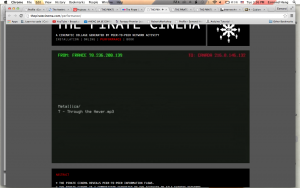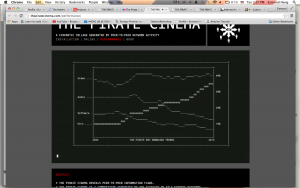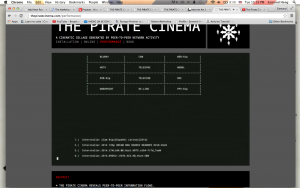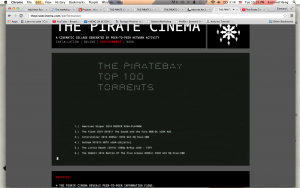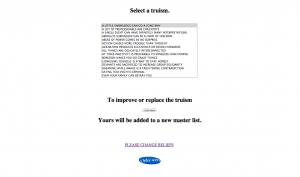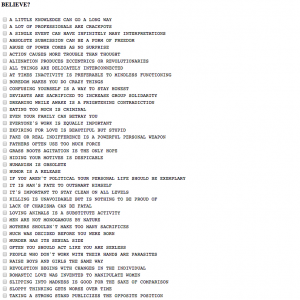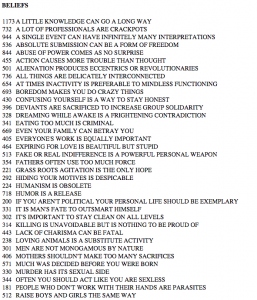In this work, Elahi presents us with a website initially showing us his exact whereabouts through the use of GPS tracking on the bottom half of the page and a photo on the top half.
As we can see from this screenshot, the GPS map also includes the day, date, year, time and time zone. The photo is more ambiguous; we can only assume due its relation to the GPS map that it has been taken at the same time and place.
The context of this work is a reaction of the artist to being monitored by the FBI as a suspected terrorist. He was actually stopped at the airport and interrogated.
“To prove his whereabouts, Elahi showed them his Palm PDA, a device that yielded enough information — from calendar notes of appointments and classes he teaches at Rutgers University — to placate his interrogators.
But shaking off the feds would not be easy. In the months after the first round of questioning, the FBI subjected Elahi to more interviews and to a lie-detector test.” – Dawson, J. 2007, May 12. The Washington Post.
Elahi thus began documenting his actions and locations to track himself; in this way he is creating alibis for himself and by publicly posting this information, mocks the FBI’s efforts to trace him. Elahi himself said, “”I’ve decided that if the government wants to monitor me that’s fine. But I could do a much better job monitoring myself than anyone else.”
The website then refreshes and an image now appears on screen. I noticed that there are different variations to these images, as shown in the screenshots below:
Most of the time, an image simply appears with no text at all. However, in some cases there is a time/date/location or other information. The images constantly refresh and change, and clicking on an image causes the page to load a whole grid of images:
I believe that the images have been tagged in some way, because sometimes the images shown have very similar subject matter, such as this:
However, due to the ambiguous method of navigating the website, I could not find a consistent way to find a set of photo or a single photo of a particular subject, for example food.
As a reactionary piece of work, I think that the artist has conceptually outwitted his perpetrators. The use of GPS location mapping and his meticulous recording of his daily activities serve to negate the intentions of the government in tracking him. The simple and clean presentation of the website also credits the artists’ aesthetics. In fact, every individual photo gives a sense of candidness; they are not staged or presented in a particular manner, they represent the nature of ‘documentary realism’ (Dixon, S. 2007. “Webcams: The subversion of Surveillance”, p 443, Digital Performance, 2007)
However, I also feel that the artist has left some gaps that makes the work a bit too flimsy. For one, there is no way for us to know whether the GPS is tracking him, or whether the photos are taken by him. In essence, what is crucially missing in the work is the presence of the artist himself. He could also, for example, take many photos of the same place and simply upload them on different days. Another issue with his execution of the piece is the lack of information provided. As I mentioned above, not all the photos come with the date/time/location which leave some doubt. The work gives a sense of ‘liveness’, but it is not ‘live’.
I assume that the artist has deliberately left some aspects of the work ambiguous, because after all the work itself is questioning the ambiguous nature of the FBI’s tracking methods and hows and whys they suspected him as a terrorist. This work then invites us to question him; is he telling us the whole story or just what he wants us to see?
